| |
Home
Famous and Fascinating Women in History
Frontiersmen and Women
The World's Greatest Composers
Famous Women Spies
Great Authors of the World
Generals and other Noteworthy People
from the Civil War
The Presidents of the United States
The First Ladies of the United States
Homes and Monuments of and to
Famous People
Historical People and Events by Month for Each Day of the Year!
Famous Figures in Black History
The Calvert Family and the Lords Baltimore
Understanding the American Revolution and its People
Everything Beatles!
Everything Maryland! |
| |
|
 
|
| |  |  |
 |  | 
James Buchanan, Harriet Lane
Johnston and Wheatland
By John T. Marck
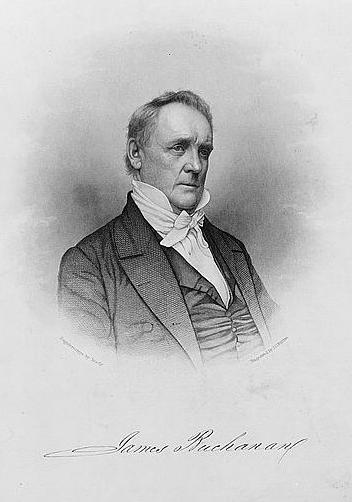
James Buchanan's
birthplace was called Stoney Batter, in Pennsylvania at Cove Gap, an
area cut through the Tuscarora Mountain, which is a part of the
Allegheny Mountain Range. The original log cabin in which he was
born on April 23, 1791 has been moved, and in its place stands a stone
pyramid monument surrounded by majestic conifers. Nearby is Buck Run,
a brook trout stream.
Although a very quiet serene place
today, it was a busy area of the western edge of civilization at the
time of his birth. In the late 1790s, the Allegheny Mountains were a
barrier to those seeking a way westward. Cove=s
Gap, was that area which was cut through two of the three parallel
mountains, making passage easier to the west. Those seeking a
passage to the west used this Gap.
James Buchanan's
father, James, Sr., first bought the log cabin in 1789, and called it
Tom=s
Trading Place. In its heyday besides the log cabin, there were
barns, stables, stores and an orchard. His father renamed it
Stoney Batter after the Buchanan home in Northern Ireland and
continued his business here until he moved with his family to
Mercersburg, when James was six years old. Even though James was
only six when he left Stoney Batter, he never forgot the area as it
left with him a warm lasting impression. Many years later in 1865, the
then owner of the cabin in which he was born invited James back to
revisit his birthplace. James replied by saying,
"It is a rugged but romantic spot, and the mountains and mountain
stream under the scenery captivating. I have warm attachments to
it."
Buchanan and
Mercersburg, Pennsylvania
The log cabin in which James was
born was originally moved from Stoney Batter to Chambersburg.
Then in 1953, it was again moved to its present location on the
Mercersburg Academy campus.

Buchanan's
Boyhood Home
In Mercersburg, James Buchanan Sr.,
purchased land and built a large, attractive brick house. It was here
that the future president spent his boyhood. The Buchanan's
lived on the second floor of the house, using the first floor as a
store operated by James, Sr. Later the house was sold, purchased by
James O. Carson, then later to the McAfee brothers, who enlarged it,
then converted it into a hotel.
In 1909, they sold it to C.W.
McLaughlin, who renamed it the Hotel Mercer. Upon his death, his
son, Jack renamed it the James Buchanan Hotel, and it is still in
operation today as a pub and residential hotel.
James Buchanan grew into a tall,
stately man, who always wore stiff formal high stock collar shirts.
His family was well to do, and as a young adult, James graduated from
Dickinson College. Very knowledgeable in law, and a gifted debater, he
had a promising career ahead of him in politics.
Buchanan's
Political Life
Buchanan was first elected to the
Pennsylvania Legislature, and then to the House of Representatives
five times, then served for a short time as Minister to Russia, before
moving to the Senate, where he served for ten years. Under
President James Polk, he served as Secretary of State, and then was
Minister to Great Britain under President Franklin Pierce.

Because of his vast experience to
service in Europe, this assisted him with the Democratic nomination in
1856, and at the same time seemed to exempt him from any involvement
in the various domestic disputes of the day, such as the issue of
slavery.
Buchanan, as President-elect,
believed that this crisis over the issue of slavery would go away if
he maintained a sectional balance in his Cabinet appointments and also
thought he could persuade others to accept Constitutional law as
interpreted by the Supreme Court. At this time the Justices were
considering the legality of restricting slavery in the western
territories, and two of the Supreme Court Justices insinuated to
Buchanan what their decision would be.
So, in his Inaugural Address,
President Buchanan said that the territorial question was going
"happily,
a matter of but little practical importance,"
since the Supreme Court was about to settle it. But Buchanan was
misled. Two days after his Address, Chief Justice Roger B. Taney
delivered the Dred Scott Decision, which asserted that Congress had no
constitutional power to deprive persons of their property rights in
the slave territories. This delighted those in the South and created a
furor in the North.
The troubles with what to do with
Kansas continued, so Buchanan decided to try to end the problems by
urging the admission of this territory as a slave state. He tried to
use his Presidential authority toward this goal and by doing so,
angered the Republicans and alienated members of the Democratic Party.
Thus, Kansas remained a territory.
In 1858, when the Republicans won
the majority in the House, every bill of significance they passed fell
before Southern votes in the Senate or a Presidential veto. The
Federal Government was in a stalemate.
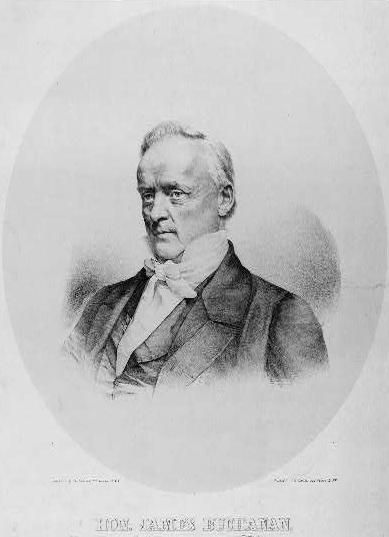
In 1860, the sectional contention
rose to such a level that the Democratic Party split into northern and
southern branches, each nominating their own candidate for the
Presidency. When the Republicans nominated Abraham Lincoln, it was a
forgone conclusion that he would win the election, even though his
name never appeared on any southern ballot. Rather than accept the
Republican nomination, some southerners advocated secession.
Dismayed by this and hesitant in
his actions, Buchanan denied the legal right of states to secede, but
then held that the Federal government had no legal right to prevent
it. Hoping for a compromise, but the secessionist leaders refused.
Buchanan then took a more militant
stance. When several of his Cabinet members resigned, he appointed
northerners, and then sent the ship, Star of the West, to carry
reinforcements to Fort Sumter.
On January 9, 1861, with this ship still far away, Buchanan reverted
to his former policies of inactivity, sitting by doing nothing of
value until he left office. In March 1861, upon President
Lincoln assuming the office of President, Buchanan retired to his home
in Lancaster, Pennsylvania, leaving his successor to deal with the
issues of war that faced the nation.
Wheatland
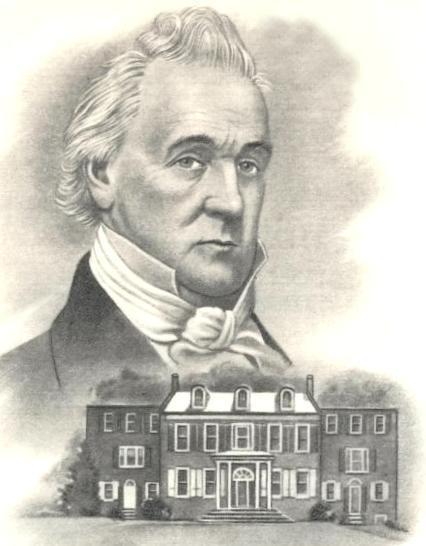
The Wheatland mansion located in
Lancaster, Pennsylvania, is a fine example of Federal architecture,
built in 1828 by William Jenkins, a Lancaster lawyer and banker. He
named it "The Wheatlands,"
because of the lush wheat fields that surrounded the property.
In 1848, while James was serving as Secretary of State, he purchased
the estate and its 22 acres of land, for $6,750.00. He then
changed the name to simply,
"Wheatland."
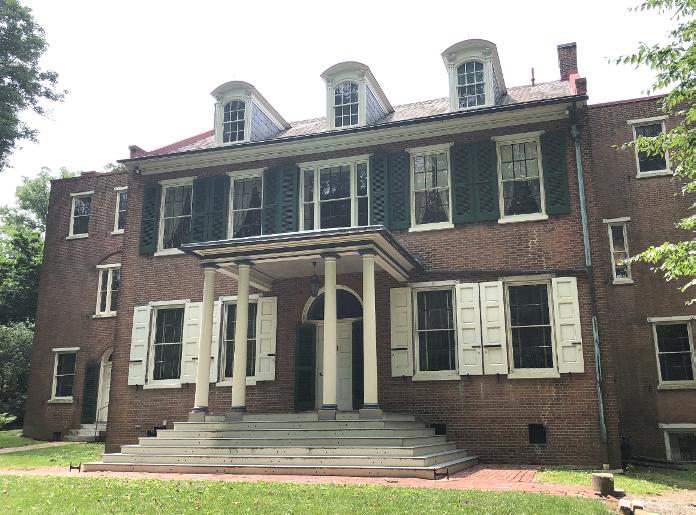
Front of Wheatland

Rear of Wheatland

President Buchanan Portrait Painting inside Wheatland
The floor plan of the house
consisted of a main central area with wings on both sides. This
central section has two rooms on the first floor that flank the
T-shaped entry and stair hall and two rooms on the second floor. Above
the front portion of the entrance hall on the second floor is an
additional small room.
The west wing of the mansion
contains two rooms on both the first and second floors, while the east
wing consists of only one room per floor. The first floor of the house
also consists of a parlor, dining/sitting room, library, family dining
room and a warming kitchen. The second floor has a guest room, three
family bedrooms and a housekeeper=s
bedroom.

Entrance Hallway looking toward Front Door
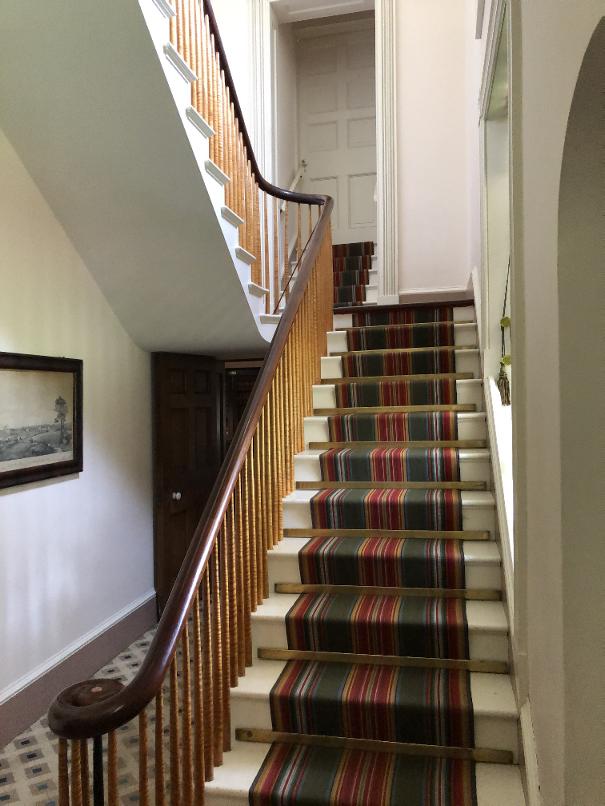
Stairway to right of rear entrance door at back of house
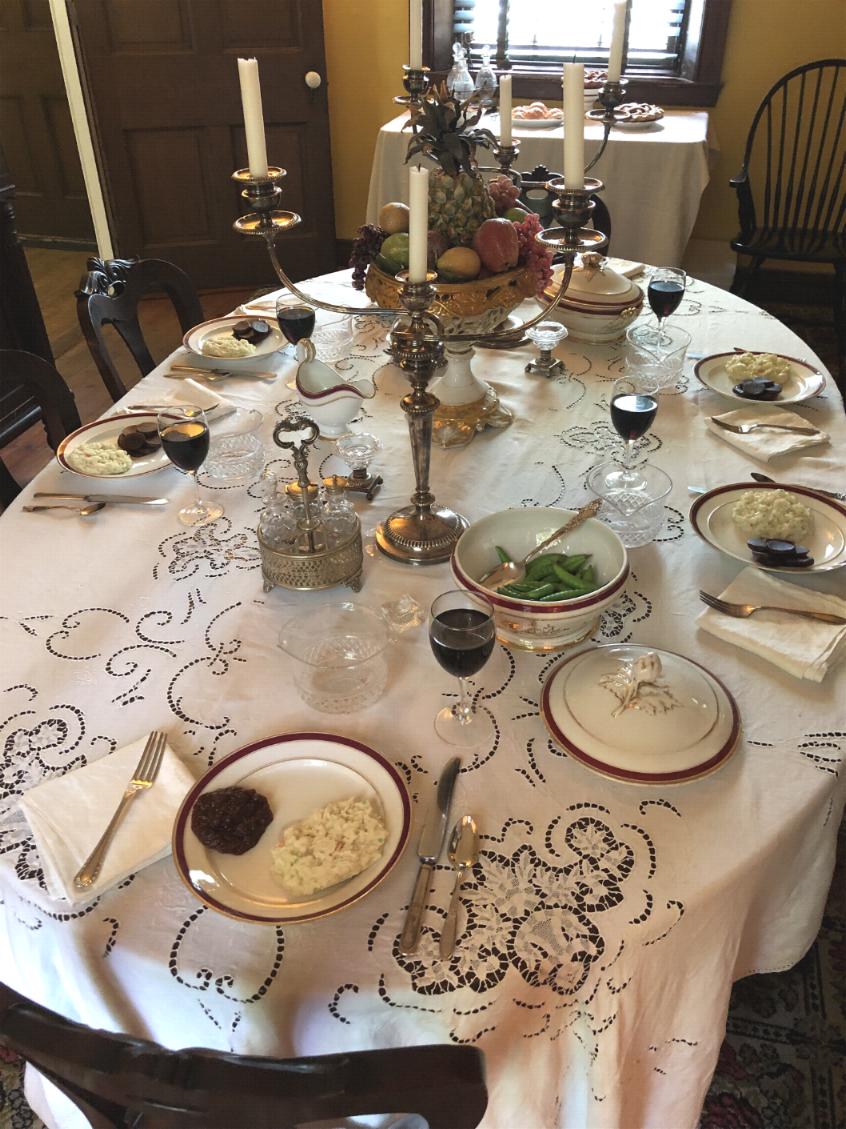
Dining Room set with a typical meal during Buchanan's day
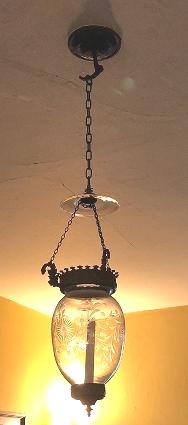
Lamp in Dining Room. Interestingly, these lamps would be moved from
room-to-room. Using a metal device, the chain was removed from the
ceiling mount, and then taken to another room once dinner was over for
example, to provide light in the next room, generally following the
occupants.
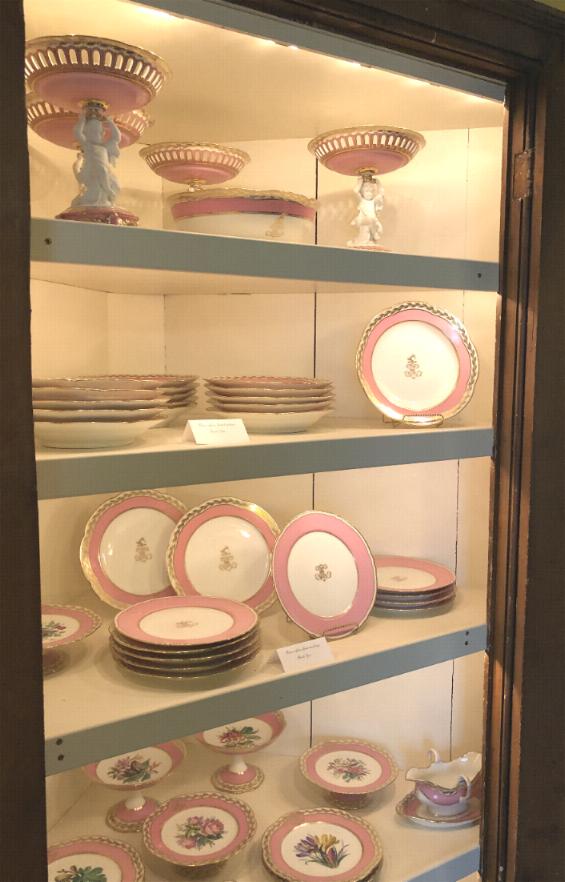
Some the original china at Wheatland
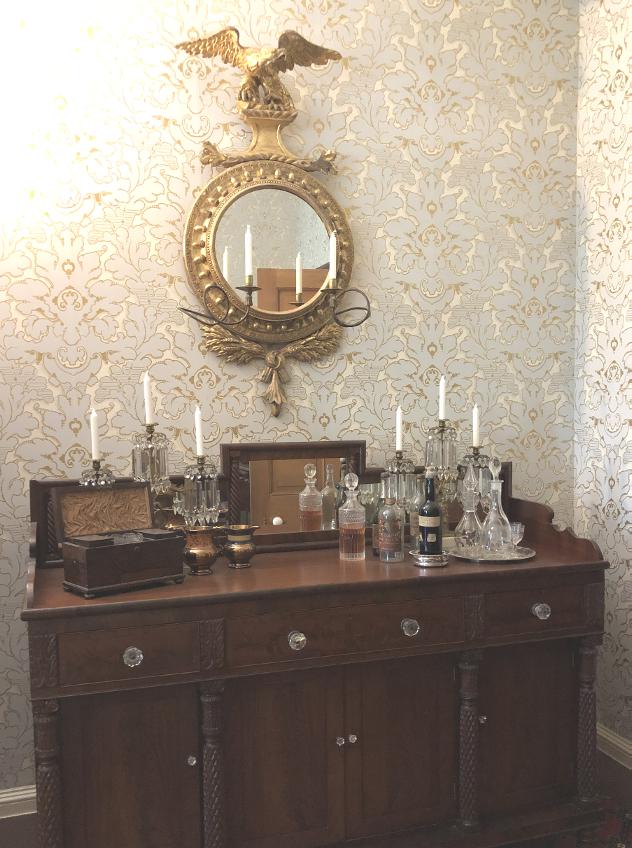
Shown here in the dining room are numerous original items. Because it
was dangerous to drink water in these times because it was not clean,
President Buchanan drank mostly wine, brandy and whiskey. As such we
wonder how people functioned having consumed so much alcohol! The dark
bottle at right front is the only existing remaining bottle of the
wine that Buchanan drank daily. Experts agree that this wine
does not go bad, and that if it was opened today it would be fantastic
in taste. While water is essential to one's health, people in these
times often mixed it with liquor to help destroy impurities, etc.
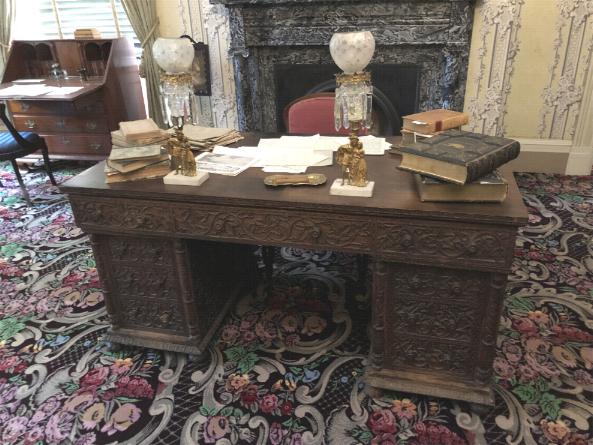
President Buchanan's desk now at Wheatland that once occupied the Oval
Office at the White House during his Presidency.

Another view of Buchanan's office and desk.
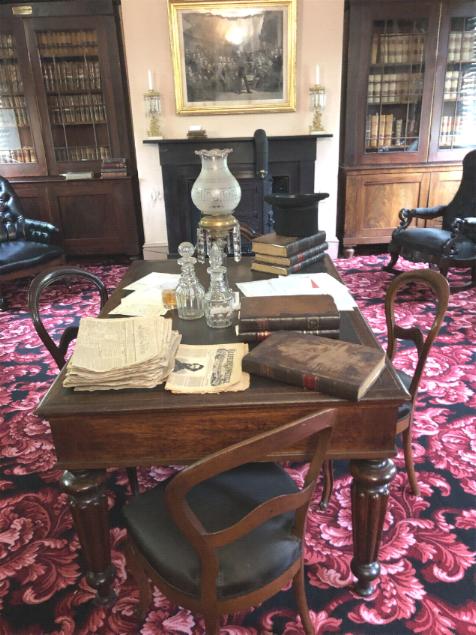
Items at the Library at Wheatland.
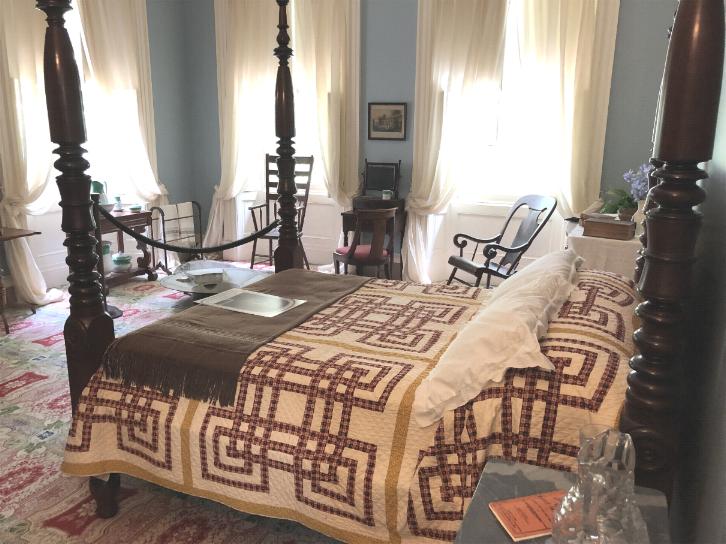
President Buchanan's bedroom and his actual bed, and the one on which
he died.
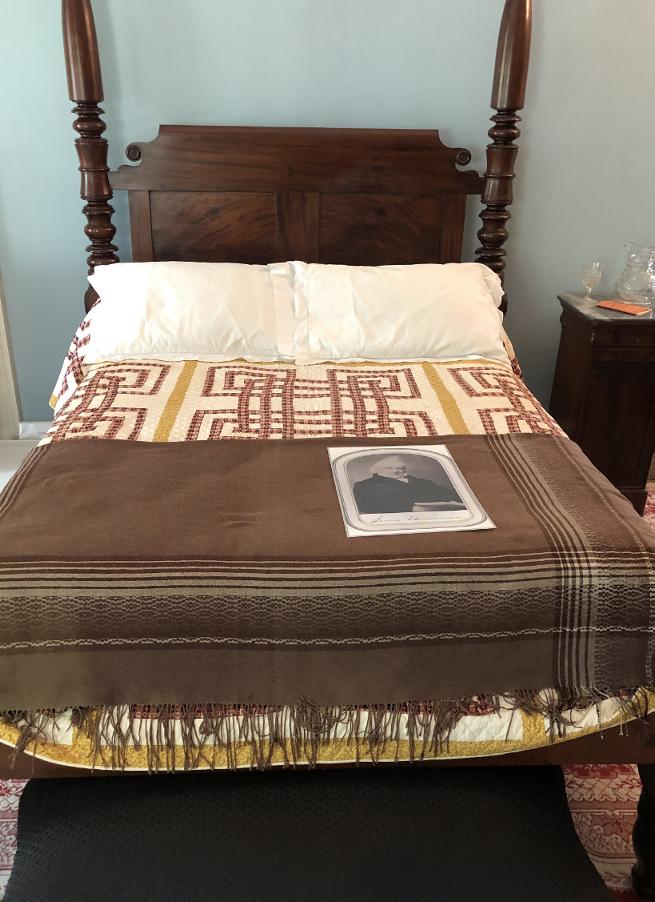
Another view of Buchanan's bed.
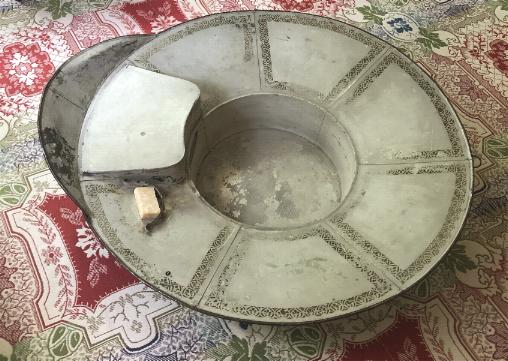
The Bath "Tub" that Buchanan used located inside his bedroom. The
carpet on the floor is the original pattern that is still available in
shops today.
Buchanan loved Wheatland, picturing
it as "a
beau of a statesman's
abode."
Buchanan's
affection for Wheatland was indicated by his saying "the
comforts and tranquility of home as contrasted with the troubles,
perplexities, and difficulties"
of his public life.
Buchanan spent twenty years here, until his death on June 1, 1868.
James Buchanan as President many
times seemed more eager to get out of the White House, and then stay
in it, with the impending disaster that soon followed, being The Civil
War. Although he supported the cause of the Union vocally, many
believed he simply tried to always appease the South, as a well as
many thought he was a lover of slavery. To tell his side of the story,
Buchanan decided to write a book. In 1866, following the end of the
Civil War, it was published, but largely ignored by the public. In it
Buchanan blamed the Civil War totally on the Republican Party and the
abolitionists. Soon after its publication, Buchanan vanished from
public life, retreating inside his beloved Wheatland. Over the
next two years of his life he only saw close friends.
James Buchanan is buried in the
Woodward Hill Cemetery in Lancaster. The Trinity Lutheran Church
established this cemetery between 1849 and 1852.

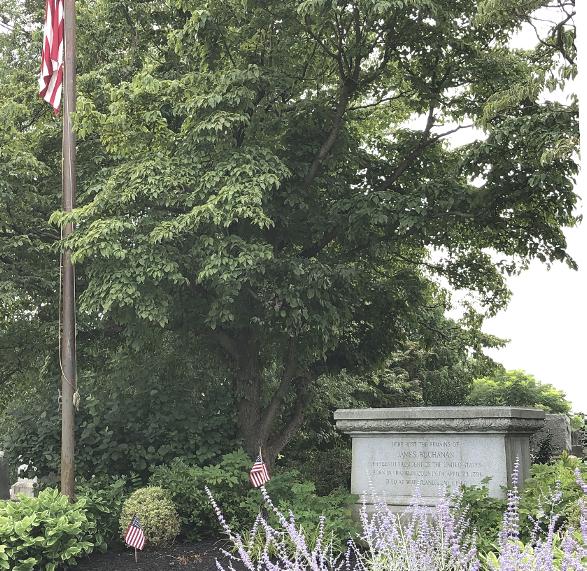
President Buchanan's Grave

Statue of President Buchanan located in Buchanan Park near Wheatland
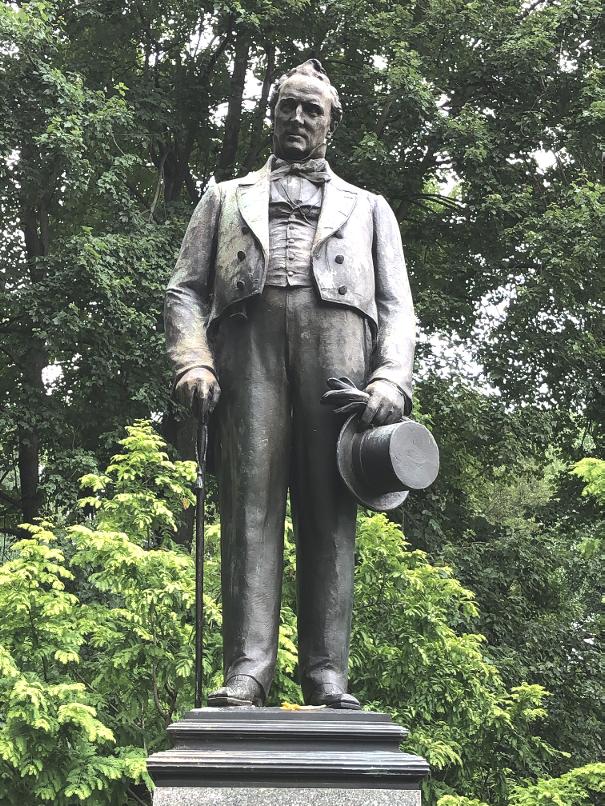
Closer view of Buchanan's Statue
*************************************************************
Harriet Lane
Johnston
"First
Lady"
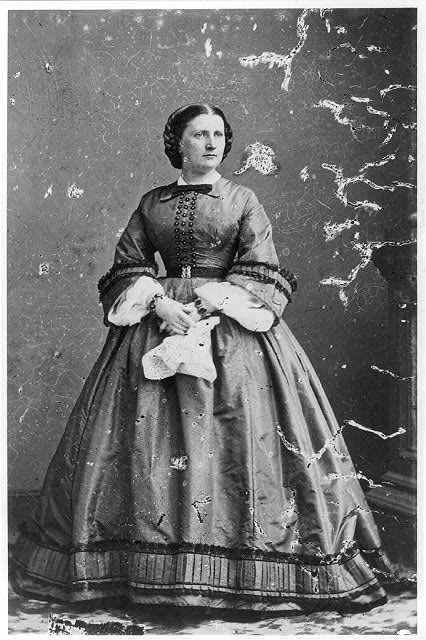
James Buchanan, who vowed never to
marry after the death of his fiancée, is the only President to date
that was unmarried, so, Harriet Lane, his niece, acted as hostess, and
is unique among all the other First Ladies. James, who was her
guardian since she was orphaned at the age of eleven, and in her
twenties at the time she was the hostess, among all the First Ladies,
is one that achieved great success in this position during times that
were very troubled, and through it all, remained a polished young
woman.
Since living with her uncle from a
young age, it was James who supervised her education, and took her
with him on his trips as Secretary of State. In appearance, Harriet
was of medium height, with masses of light hair that was golden in
color.
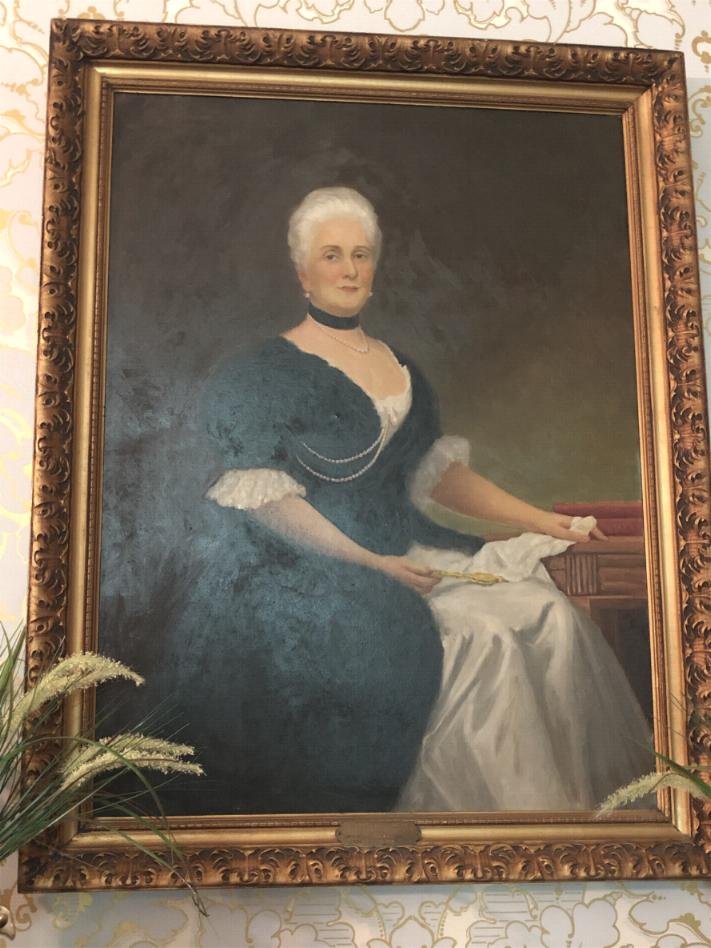
Portrait Painting of Harriet at Wheatland
After the sadness the country
experienced during the Pierce administration, Washington welcomed
their new "Democratic
Queen"
as she was known. Harriet filled the White House with flowers, and
guided the social life there with enthusiasm and discretion, which won
her national popularity.
During Buchanan's
Presidency as sectional tensions increased, Harriet was tactful in
working out seating arrangements for the weekly formal dinner at the
White House, using care to keep political foes apart, while giving
these dignitaries their proper precedence.
Although she never faltered in her tactful ways, the task soon became
impossible to balance, when seven states seceded, as Buchanan was
about to leave office. Had this happened earlier in his term,
the White House and its various dinners may have been much less of a
pleasant experience.
Beginning in her teenage years,
Harriet was a happy person, who flirted with various gentlemen,
calling them "pleasant
but dreadfully troublesome."
Her uncle James warned her against, "rushing
precipitately into matrimonial connexions."
Waiting until she was 36 to marry,
she chose, with her uncle's
approval, Henry Ellicott Johnson, a Baltimore banker. Over the next 18
years, Harriet faced much sorrow. She first lost her uncle, then her
two sons, followed by her husband. After the death of her husband, she
decided to leave Wheatland and live in Washington, among friends she
had met during happier times.
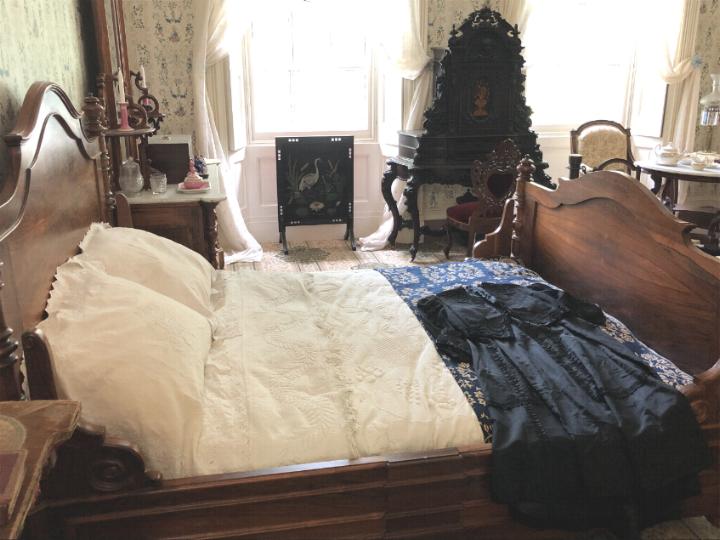
Harriet's Bedroom at Wheatland

Doll inside Harriet's bedroom at Wheatland. Some say the doll
resembled Harriet, although most believe Harriet was much more
attractive!
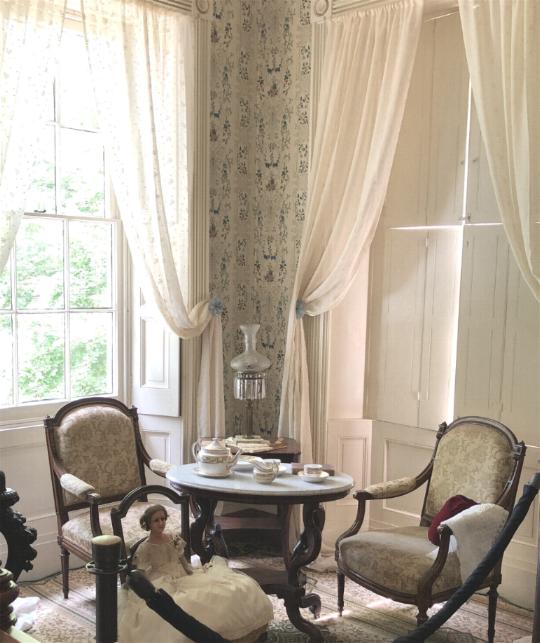
Another view of Harriet's bedroom showing location of Doll.
Over the years she had acquired a
sizable art collection, which she bequeathed to the government. After
her death in 1903, they accepted this gift, which inspired an official
at the Smithsonian Institution to call her the
"First
Lady of the National Collection of Fine Arts."
Additionally, Harriet dedicated a
large sum of money to endow a home for invalid children at Johns
Hopkins Hospital. It became an outstanding pediatric facility
and gained a national reputation, which is a fitting memorial to the
young lady who handled the duties at the White House with such dignity
and charm. Today, the Harriet Lane Outpatient Clinics serve
thousands of children.

View from window to outside at Wheatland
************************************************
Quick
Biographical Facts
JAMES BUCHANAN
15th President
Term- March 4, 1857 to March 4,
1861
Democratic Party
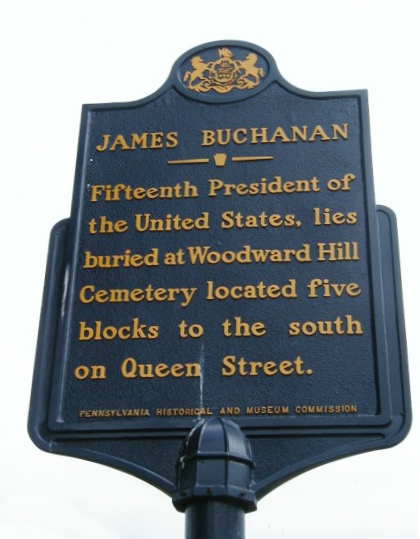
Birth: Cove Gap, (near Mercersburg)
Pennsylvania, April 23, 1791.
Nick Name: Old Buck
Ancestry: Scotch-Irish
Marriage: None. Buchanan vowed
never to marry after his fiancée died.
Children: None
Home: Wheatland, Lancaster,
Pennsylvania.
Education: Attended Old Stone
Academy; graduated from Dickinson College in 1809.
Religion: Presbyterian
Occupation before Presidency:
Lawyer
Pre-Presidential Offices: Member of
Pennsylvania Legislature; Member of U.S. House of Representatives and
U.S. Senate; Minister to Russia and Great Britain; Secretary of State.
Age at Inauguration: 65
Buchanan Administration: Vice
President: John C. Breckenridge of Kentucky,
Inauguration March 4, 1857, The
Capitol, Washington, D.C.
Occupation after Presidency:
Retired
Writings: Mr. Buchanan's
Administration on the Eve of the Rebellion (1866); Works of James
Buchanan (12 volumes, 1908-1911), ed. by John Bassett Moore
Death: Lancaster, Pennsylvania,
June 1, 1868.
Cause of Death: Rheumatic gout at
age 77.
Place of Burial: Woodward Hill
Cemetery, Lancaster, Pennsylvania.
Interesting
Facts:
Buchanan was one of seven
Presidents to have been born in a log cabin. The cabin now stands on
the grounds of Mercersburg Academy, Mercersburg, Pennsylvania
Buchanan worked out the first trade
agreement with Russia when he served as Secretary of State under
President Polk
During his Presidency in October
1859, Federal troops stormed the U.S. arsenal at Harpers Ferry, which
was occupied by anti-slavery militants under John Brown. Brown was
found guilty of treason and hanged
Buchanan had a habit of closing one
of his eyes almost constantly, because he was nearsighted in one eye
and farsighted in the other
Buchanan was the only President to
never marry
Copyright © 1992-2022 (2019) by John T. Marck. All
Rights Reserved. This article and their accompanying pictures,
photographs, and line art, may not be resold, reprinted, or
redistributed for compensation of any kind without prior written
permission from the author. Informational assistance from
"Wheatland,"
Lancaster, Pennsylvania; The White House; Presidential Avenue and
The Presidents of the United States, by John T. Marck, and The
First ladies of the United States, By John T. Marck.
A
Splendid Time Is Guaranteed For All
| | |
| |

